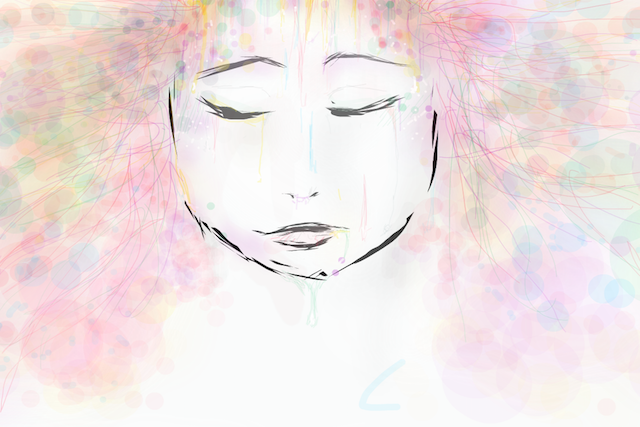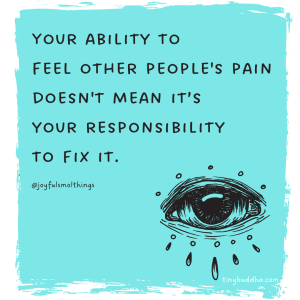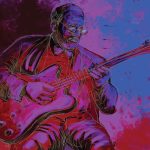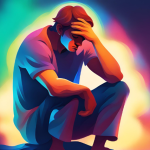
“If I take death into my life, acknowledge it, and face it squarely, I will free myself from the anxiety of death and the pettiness of life—and only then will I be free to become myself.” ~Martin Heidegger
If you are a lifelong anxiety warrior like me, you’ve been on a journey of ups and downs.
Anxiety fills our whole bodies. Tension. Heart pounding. Sometimes I feel like my heart must be visibly pulsating so much so that if there are others around, they can see it.
There are varying levels and types of anxiety, including clinical disorders. But the thing that we have in common is that at times we feel intense despair—like the world is caving in on us. We can feel literally stuck and life may even feel meaningless.
But what if anxiety isn’t always negative? What if we could begin to see it differently?
I’m going to share with you three archetypes that I use to cognitively reframe anxiety. Seeing anxiety in these ways has helped me feel more empowered in my journey.
First, I’d like to share a short story about my journey with anxiety.
I began to experience anxiety in early childhood. My parents divorced when I was three—about the same time I developed asthma.
The back and forth visits between my parents were hard on me. Just as I’d get comfortable in one place with one set of rules, it was time to change. I felt an internal struggle to be one Melissa in two different households.
I was sick a lot as a child and was routinely hospitalized each year for my asthma. I also pretended to be sick at times to stay home because the transition back to school felt so overwhelming. Missing school only created more anxiety as I tried to catch up.
To complicate matters, I grew up with a mom who could be very nurturing, but wildly unstable at times. Many of my fears and anxieties arose throughout my youth when my mom would spend months, sometimes years, in bed with some ambiguous illness no doctor could diagnose.
I believe the peacemaker and people pleasing roles I often served in my family played a part in developing my highly sensitive and empathetic nature.
Anxiety continued to visit me frequently throughout my youth and into adulthood as I contemplated my place in the world while healing past trauma.
When I was in graduate school, I talked to my therapist about medication. I was grieving the sudden death of my mom and was in constant struggle with anxiety. While there are cases that necessitate medication, I chose to explore other routes.
Today I still encounter feelings of self-doubt, abandonment, thoughts about death, my purpose, not fitting into the societal mold, and so forth. Some of these issues tie into what we might call existential anxiety, the anxiety that arises when we contemplate our life’s existence.
What has helped me to understand anxiety’s true nature is to work with anxiety rather than against it. By working with anxiety, we can start to see the light in anxiety rather than a dark monster. These are the archetypes I have assigned to anxiety to reflect that light.
1. Anxiety as Motivator.
A few years ago I attended a workshop in Mexico City on existential psychotherapy. One of the key concepts in existentialism is that anxiety is a core human experience that moves us toward growth and development. Because we know our time is limited and we all grapple with big, unanswerable questions, we feel anxiety about existence itself, and about making our lives matter. This anxiety calls us to be ourselves and live with purpose as we examine our lives.
Becoming a yoga instructor was one of the most terrifying times of my life. Despite years of public speaking and outreach as a social worker, finding my teaching voice was different. It was scary, as I doubted my capacity to bring a tradition I revered so much to others in a meaningful way.
Now when I face anxiety before teaching, I ask it to help me tap into the human anguish that my students face in other ways to best support them. It fuels my purpose of sharing my own vulnerability from the heart.
Some amount of anxiety is healthy and compels us to ask ourselves who we are, why we’re here, and where we’re going. Anxiety typically relates to these questions under the surface. The exception would be if we are talking about a specific fear, like spiders.
There is a difference between existential anxiety (which calls us to live with meaning) and pathological forms of anxiety (which deeply impair our ability to function). When anxiety becomes a problem, it becomes a disorder; yet, the treatment (cognitive behavioral therapy, talk therapy, etc.) is typically the same.
How does anxiety show up in your life as a motivator? Does it move you toward action?
2. Anxiety as Teacher
When I encounter pain, particularly as it relates to anxiety, grief, and family conflict, I try to remember to ask myself, “What is there to learn here?” By asking this question, I take myself out of the role of victim and into the role of an empowered learner.
Because we see anxiety as a mental health problem, we forget that anxiety is not just living in the brain. It fills us with sensations and emotions in our bodies as our beliefs and old stories play out. Something is happening within us that is requesting our presence. Anxiety can help us to become more aware of what needs greater attention and love.
As an empath, I am prone to absorbing the emotions of others. There are moments when I experience anguish because of a painful time someone else is having. My body tightens up and feels suffocated when this happens.
When this occurs, I become more aware of what is happening and that I need to change something. It’s a cue to me that I need to do something with the suffering I’m feeling. It’s time to get on my yoga mat or go for a walk or maybe it’s a cue that I need to set boundaries in a relationship.
How does anxiety show up in your life as a teacher? What do you learn from anguish?
3. Anxiety as Liberator.
Wait, what? That was my reaction when I wrote the word. Allow me to explain.
As a society, we pathologize despair are taught anxiety is a sickness, which leads to us feeling bad about feeling bad. But since anxiety is a natural part of being human, it’s inevitable that it will surface. Even though I feel alone with anxiety sometimes, I try to remember I’m part of a collective experience of confusion, doubt, and suffering.
Sometimes anxiety arrives in my life and I’m able to take a moment to realize its origin. I notice that behind that anxiety is often very deep compassion, very deep fear, very deep desire to be a better person, and so forth. I then can see anxiety as a very deep capacity to experience the spectrum of human emotions and allow them to coexist.
Anxiety can either be avoided by living on the surface, as existential psychotherapist Emmy Van Deurzen puts it, or it can be deeply embraced as an inherent part of our being. If we choose to avoid it, it will smack us in the face later in life.
When we can start to observe anxiety in this way, we start to see it for what it is. We see that joy and anguish can exist together. We can lean into it discomfort rather than avoid. And through this process, we can begin to feel a sense of freedom.
What if anxiety is not something wrong with you but just part of the path?
The ideas I outlined might take a little time to resonate. I encourage you to sit with them and feel into each archetype before reaching any conclusion.
**I am not suggesting that reframing anxiety in this way can cure severe clinical disorders. My intention is provide a thought-provoking piece to explore as a complement to any professional treatment you may receive now or in the future.
Color splash image by Signe7542
About Melissa Renzi
Melissa Renzi is a Licensed Social Worker and Certified Trauma-Informed Yoga Teacher. She helps sensitive souls transform anxiety and cultivate lasting self-love. She leads global retreats designed for women, introverts, and highly sensitive people that focus on renewing self-care and deepening our connection to the natural world. Access her Highly Sensitive Person’s Relationship Guide for concrete tools to create intimate, fulfilling relationships.
- Web |
- More Posts













 Though I run this site, it is not mine. It's ours. It's not about me. It's about us. Your stories and your wisdom are just as meaningful as mine.
Though I run this site, it is not mine. It's ours. It's not about me. It's about us. Your stories and your wisdom are just as meaningful as mine. 